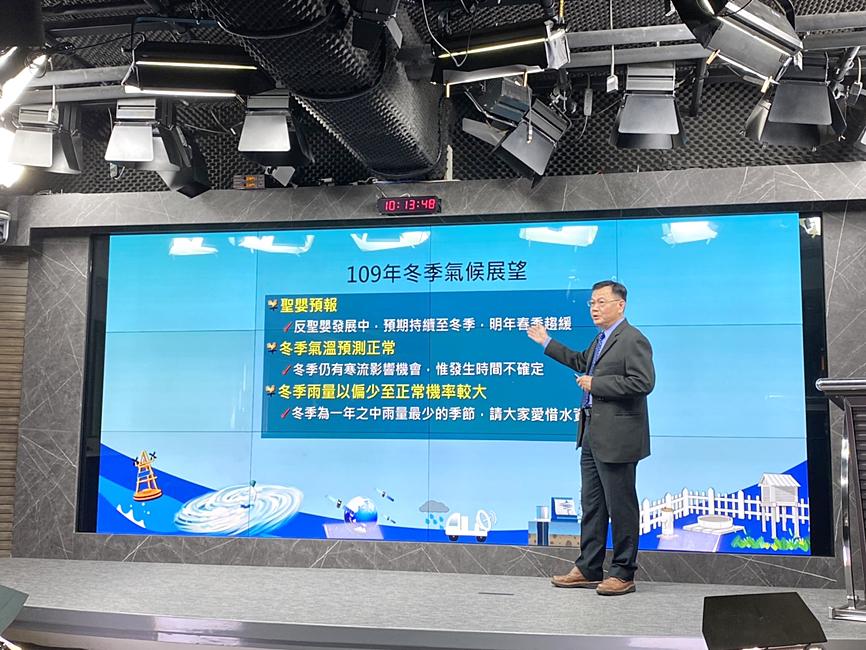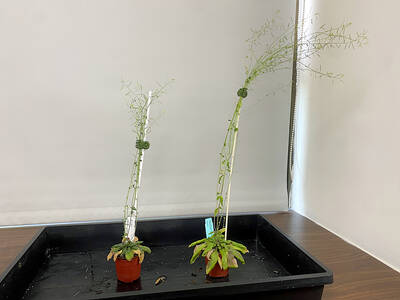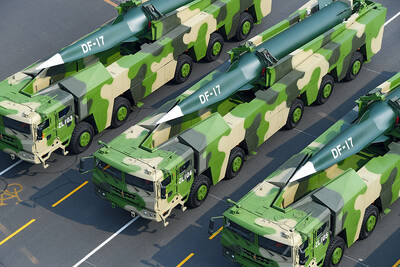The current water shortage is expected to worsen in the next few months, with the Central Weather Bureau (CWB) yesterday forecasting a colder, dryer winter than normal.
With winter starting next week, the bureau at a media briefing outlined the expected conditions through February and reviewed autumn’s significant weather events.
Weather Forecast Center director Lu Kuo-cheng (呂國臣) said that autumn this year had three major characteristics:

Photo: Hsiao Yu-hsin, Taipei Times
First, 13 tropical storms and typhoons formed from September to this month, up from 11 in the same period last year, Lu said.
Apart from Atsani, for which sea and land alerts were issued in Taiwan, the tropical storms and typhoons this autumn generally moved toward Japan or South Korea, or moved over the South China Sea, he said.
Second, as of Monday, the average temperature for autumn has been 25.9°C, 1.02°C higher than average, he said, adding that the figure would be the third-highest average for the whole season, behind 26.27°C in 2017 and 26.04°C in 2016.
Third, average rainfall was 354.8mm, 271.7mm less than average, Lu said.
Rainfall fell by more than 40 percent compared with autumn last year, he said.
Rain came from frontal systems, clouds in the circumfluence of typhoons or tropical storms, and the northeast monsoon, he said.
Most of the rain fell in Taiwan’s northeast, which had significantly more rainfall than the west coast, he said.
The bureau’s weather observation station near Sun Moon Lake (日月潭) in Nantou County recorded 86mm, the lowest rainfall reading since the station was established in 1941, Lu said.
The average in Chiayi County’s Alishan Township (阿里山) was the fifth-lowest since the station there was established, while stations in Taipei, New Taipei City’s Tamsui District (淡水), Hsinchu, Chiayi City, Taichung’s Wuci District (梧棲) and Taitung’s Chengkung Township (成功) are also reporting low autumn rainfall, which might make top 10 lists for dry years at each station, he said.
“The only months this year that had higher than average rainfall were May and August, while June, July and September had significantly less than average,” he said. “The average rainfall from June to this month was 902.5mm, or about 60 percent of the same period last year and the lowest since 1993.”
The rainy season in Taiwan ended earlier than usual this year, with no tropical storm or typhoons approaching the nation in July, Lu said.
Taiwan had similar conditions in 2014, when no tropical storm or typhoon made landfall in August.
Average rainfall from next month to February is expected to be from slightly below average to normal, he said.
Due to La Nina effect, the average temperature in the three months would be lower than normal, Lu said.
Next month, the average temperature would be warmer than usual, while January would be colder than normal, he said, adding that no forecast was available for February.
Cold waves are expected relatively frequently this winter, as La Nina tends to facilitate cold air from the north, Lu said.
Taiwan can expect about 6.6 days that are affected by cold waves this winter, he said.
La Nina is expected to gradually ease as spring arrives, he said.

Taiwanese scientists have engineered plants that can capture about 50 percent more carbon dioxide and produce more than twice as many seeds as unmodified plants, a breakthrough they hope could one day help mitigate global warming and grow more food staples such as rice. If applied to major food crops, the new system could cut carbon emissions and raise yields “without additional equipment or labor costs,” Academia Sinica researcher and lead author the study Lu Kuan-jen (呂冠箴) said. Academia Sinica president James Liao (廖俊智) said that as humans emit 9.6 billion tonnes of carbon dioxide compared with the 220 billion tonnes absorbed

The Taipei Mass Rapid Transit (MRT) Wanda-Zhonghe Line is 81.7 percent complete, with public opening targeted for the end of 2027, New Taipei City Mayor Hou You-yi (侯友宜) said today. Surrounding roads are to be open to the public by the end of next year, Hou said during an inspection of construction progress. The 9.5km line, featuring nine underground stations and one depot, is expected to connect Chiang Kai-shek Memorial Hall Station to Chukuang Station in New Taipei City’s Jhonghe District (中和). All 18 tunnels for the line are complete, while the main structures of the stations and depot are mostly finished, he

Taipei is to implement widespread road closures around Taipei 101 on Friday to make way for large crowds during the Double Ten National Day celebration, the Taipei Department of Transportation said. A four-minute fireworks display is to be launched from the skyscraper, along with a performance by 500 drones flying in formation above the nearby Nanshan A21 site, starting at 10pm. Vehicle restrictions would occur in phases, they said. From 5pm to 9pm, inner lanes of Songshou Road between Taipei City Hall and Taipei 101 are to be closed, with only the outer lanes remaining open. Between 9pm and 9:40pm, the section is

China’s plan to deploy a new hypersonic ballistic missile at a Chinese People’s Liberation Army Rocket Force (PLARF) base near Taiwan likely targets US airbases and ships in the western Pacific, but it would also present new threats to Taiwan, defense experts said. The New York Times — citing a US Department of Defense report from last year on China’s military power — on Monday reported in an article titled “The missiles threatening Taiwan” that China has stockpiled 3,500 missiles, 1.5 times more than four years earlier. Although it is unclear how many of those missiles were targeting Taiwan, the newspaper reported